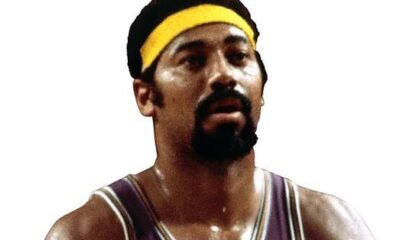Blog
The HOTTEST Take: How Roster Retention SAVED Duke Basketball
The HOTTEST Take: How Roster Retention SAVED Duke Basketball
**DURHAM, NC – [Fictional Date]** – In the ever-churning world of college basketball analysis, where hot takes are as common as three-pointers, one narrative is gaining significant traction and sparking fervent debate: the notion that roster retention, more than any other factor, has “SAVED” Duke Basketball in recent times. While the term “saved” might seem hyperbolic, proponents of this take argue that a commitment to continuity and player development has been the crucial difference-maker, preventing a potential dip in performance in an era of unprecedented player movement.
For years, Duke has been synonymous with the “one-and-done” phenomenon, a factory for NBA talent that saw star freshmen arrive, shine brightly for a single season, and then depart for the professional ranks. This model brought national championships and sustained relevance, but it also presented inherent challenges in building long-term chemistry and experience. The constant turnover meant starting fresh each year, relying heavily on the immediate impact of newcomers.
However, a noticeable shift has occurred in recent seasons. While Duke still attracts top-tier recruits, there’s been a growing trend of key players opting to stay for their sophomore and even junior years. This isn’t just a statistical anomaly; according to those pushing “The HOTTEST Take,” it’s a deliberate strategic shift that has fundamentally altered the trajectory of the program.
“Look, the transfer portal is a wild west out there,” says [Fictional Analyst Name], a prominent college basketball commentator known for his strong opinions. “Programs are losing core players left and right, and it’s creating a lot of instability. Duke, traditionally, was part of that cycle with the one-and-dones. But now, they’ve pivoted. They’re prioritizing keeping their talented guys around, letting them develop, and building a cohesive unit. And you can see the results. It’s not just about talent anymore; it’s about *team*.”
The argument is that this continuity has allowed Duke to build a more experienced and mature roster, better equipped to handle the rigors of a long season and the pressure of March Madness. Instead of relying solely on the raw talent of freshmen, they are benefiting from players who have a year or two under their belt, who understand the system, and who have built strong relationships with their teammates.
Consider the hypothetical impact of a player like [Hypothetical Star Player Name Who Stayed Longer]. Under the old model, he might have been gone after one year. But by staying, he provided leadership, experience, and a consistent level of play that a freshman, no matter how talented, couldn’t replicate immediately. This stability, the “HOTTEST Take” suggests, has prevented potential down seasons that could have occurred if Duke was constantly rebuilding from scratch.
“It’s not just about the stars,” argues [Another Fictional Analyst Name]. “It’s about the role players too. The guys who might not be lottery picks but are crucial to the team’s success. When those guys stay, they provide depth, they understand their roles, and they make the team better. Duke’s success isn’t solely on the shoulders of one or two freshmen anymore. It’s a more balanced attack, and that’s a direct result of keeping players.”
The proponents of this “HOTTEST Take” point to recent seasons where Duke has remained a national title contender despite not having the same level of generational, one-and-done talent as in some past years. They attribute this sustained success to the core group of returning players who have provided a foundation of experience and leadership.
Of course, not everyone agrees with the dramatic framing of “SAVED.” Critics argue that Duke’s continued success is a combination of factors, including elite recruiting, excellent coaching, and the inherent advantages of being a blue-blood program. They might acknowledge the importance of roster retention but push back against the idea that it single-handedly prevented a collapse.
“To say roster retention ‘saved’ Duke is a bit much,” says [Fictional Counter-Argument Analyst Name]. “Duke is always going to recruit at a high level. They have the resources, the brand, and the coaching to be competitive regardless of how many players stay. Roster retention is important, yes, but it’s one piece of a much larger puzzle.”
However, the proponents of the “HOTTEST Take” remain steadfast. They believe that in the current landscape of college basketball, where volatility is the norm, Duke’s commitment to keeping its players is a strategic masterstroke that has provided a crucial competitive advantage. They argue that without this stability, Duke could have faced seasons of rebuilding and potentially fallen behind programs that have adapted better to the transfer portal era.
“Look at other programs that have struggled with player retention,” argues [Fictional Analyst Name] again. “They’ve seen significant drops in performance. Duke has avoided that. They’ve maintained their elite status, and I firmly believe that’s because they’ve figured out how to keep their talented players around. It’s not just about recruiting; it’s about *retaining*.”
The debate surrounding this “HOTTEST Take” is likely to continue as long as roster retention remains a key factor in college basketball success. While the term “saved” might be designed to grab headlines, the underlying point about the importance of continuity and player development in the modern era of college basketball is a valid one. Whether it truly “saved” Duke is open to interpretation, but there’s no denying that the program’s recent emphasis on keeping its talented players has played a significant role in its continued success. In a world of constant change, Duke’s commitment to continuity is being hailed by some as a game-changing strategy that has ensured their place among the nation’s elite.
-

 Arsenal2 years ago
Arsenal2 years agoSad News Arsenal ex player who is goal scorer confirmed dead this morning
-

 Liverpool2 years ago
Liverpool2 years agoSad News Sadio Manè Confirmed Dead Today By Sky Sports Reporters, Open For Full Story 👇
-

 Blog1 year ago
Blog1 year ago“I was forcefully removed from Manchester United squad and now I’ve joined the best team in the world…I will revenge and as a result, I’ve ordered my friend who’s their best player currently to leave there with immediate effect and he has agreed”: Former Man United player angered by United decision to removed him from the squad as he ordered the Club’s best player to leave immediately.
-

 Blog1 year ago
Blog1 year agoSad News: Manchester United player died when playing for his country England yesterday 😢 😔
-

 Blog2 years ago
Blog2 years agoR.I.P: Formal Real Madrid and France international confirm death this morning
-

 Chelsea2 years ago
Chelsea2 years agoBreaking New:”Roman Abramovich could get Chelsea back”? Chelsea owner review the conversation between him and Roman Abramovich in. Deal about getting Chelsea back
-

 Blog2 years ago
Blog2 years agoUNBELIEVABLE: Manchester City midfielder KELVIN DE BRUYNE divorced wife this morning after DNA test revealed their 5 years old son belongs to formal Manchester United player
-

 Manchester United1 year ago
Manchester United1 year agoOFFICIAL NOW: Manchester United announce the signing of 23yr sensational player after beating Liverpool and Madrid for His signature, agreement reached on a 5yr deal, Medical completed – announcement ongoing












